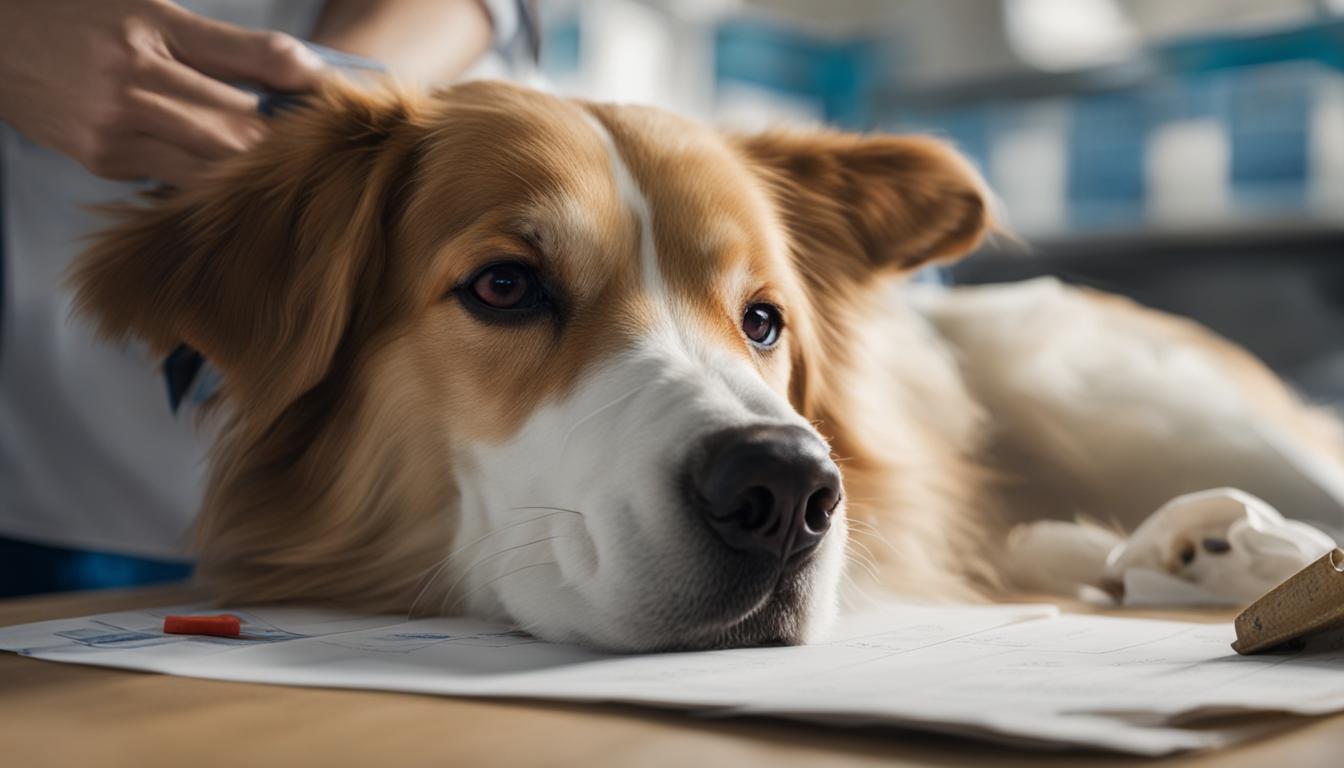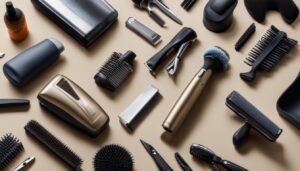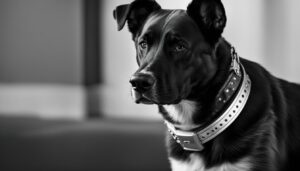After your dog undergoes neutering surgery, it is crucial to provide proper care to ensure a safe and speedy recovery. These tips will help you navigate the post-neutering period and promote your dog’s well-being.
Key Takeaways:
- Limit your dog’s activity during the recovery period to prevent complications.
- Maintain a regular feeding schedule and avoid making diet changes.
- Keep the incision dry and prevent your dog from licking or chewing it.
- Check your dog’s incision twice daily for any signs of infection.
- Monitor your dog for signs of pain and contact your veterinarian if necessary.
Limit Activity
After your dog undergoes neutering surgery, it is important to limit their activity during the recovery period. Excessive activity can disrupt the healing process and potentially cause complications. To ensure a safe and smooth recovery, it is essential to manage your dog’s movements and provide proper confinement.
During the first 7 to 10 days after surgery, keep your dog in a carrier, kennel, crate, or confined to a small room when you cannot supervise them. This will prevent them from engaging in strenuous activities that could strain their incision site. It is crucial to avoid long walks or play with other animals or people during this time.
When it is time for bathroom breaks, walk your dog on a leash to control their movements and prevent them from running or jumping excessively. This controlled exercise will help prevent complications and promote a faster recovery. Remember, the goal is to limit activity and provide a calm and quiet environment for your dog to heal.
Preventing Excessive Activity after Neutering
| Activities to Avoid | Recommended Activities |
|---|---|
| Running | Short, leash walks for bathroom breaks |
| Jumping | Gentle play indoors |
| Rough play with other animals | Quiet interaction with familiar, calm pets |
| Long walks or hikes | Resting and relaxing in a confined space |
Remember, it is crucial to provide a calm and controlled environment for your dog during the recovery period. By limiting their activity, you can help ensure a successful healing process and prevent complications.
By adhering to these guidelines and limiting your dog’s activity after neutering, you can promote a safe and speedy recovery. Always consult your veterinarian for specific instructions and seek their advice if you have any concerns or questions about managing your dog’s movements during the recovery period.
Keep Them to a Regular Diet
Proper nutrition plays a crucial role in your dog’s post-neutering recovery. It’s essential to maintain a regular feeding schedule and avoid making any sudden diet changes during this time. Gradually reintroduce your dog to their regular diet to ensure a smooth transition.
After surgery, your dog’s appetite may be reduced temporarily. Start by offering them a half-size meal when you bring them home, and then provide their regular evening meal. Puppies and kittens may require an additional meal during the day to meet their nutritional needs.
It’s important to resist the temptation to give your dog junk food or “people food.” Stick to their regular, balanced dog food to provide the necessary nutrients for their recovery. Introducing new foods or ingredients may upset their stomach and hinder their healing process.
Monitor your dog’s reaction to the food and look out for any abnormal signs, such as prolonged lethargy, diarrhea, or vomiting. If you notice any concerning symptoms, consult your veterinarian for guidance.
Benefits of Maintaining a Regular Diet
Feeding your dog a regular diet after neutering can offer several benefits:
- Consistency: A regular feeding schedule helps your dog adjust to their new post-surgery routine and promotes stability during their recovery.
- Nutritional Support: A balanced diet provides the essential nutrients your dog needs to heal and maintain good health.
- Prevent Digestive Issues: Abrupt changes in diet can lead to digestive upset, such as diarrhea or constipation. By maintaining their regular diet, you can minimize the risk of these issues.
- Weight Management: A regular feeding schedule helps maintain a healthy weight for your dog, reducing the risk of complications and supporting their overall well-being.
By keeping your dog on a regular diet and monitoring their response to food, you can aid their recovery process and ensure they receive the nutrition they need to regain their strength and vitality.
Keep the Incision Dry
One of the most crucial aspects of post-neutering care for your dog is to keep the incision site dry. This helps prevent the risk of infection and promotes faster healing. Wetting the incision can introduce bacteria and delay the recovery process, so it’s important to take precautions.
During the recovery period, which typically lasts for around 10 days, avoid bathing your dog. Instead, focus on keeping them clean and dry indoors. Opt for leash walks for bathroom breaks and minimize their exposure to water. You can use a towel to gently wipe around the incision if necessary, but be careful not to disrupt any stitches or irritate the area.
Another important aspect of keeping the incision dry is to prevent your dog from licking or chewing on it. This can introduce infection-causing bacteria and slow down the healing process. To deter your dog from licking or chewing, you can use an Elizabethan collar, also known as a cone collar, or try distracting them with treats or toys.
Table: Tips for Keeping the Incision Dry
| Tip | Description |
|---|---|
| Avoid bathing | Do not bathe your dog during the recovery period to prevent wetting the incision. |
| Leash walks | Take your dog on leash walks for bathroom breaks to minimize exposure to water. |
| Gently wipe | If necessary, use a towel to gently wipe around the incision, avoiding the stitches. |
| Prevent licking or chewing | Use an Elizabethan collar or distract your dog with treats or toys to prevent them from licking or chewing the incision. |
By following these tips and taking proactive measures to keep the incision site dry, you can help ensure a smooth recovery process for your dog after neutering. Remember to monitor the incision site closely for any signs of infection, such as redness, swelling, or discharge, and consult your veterinarian if you have any concerns.
Check Their Incision Twice Daily
One of the most important aspects of post-neutering care for your dog is monitoring the healing of their incision. By checking their incision site twice daily, you can ensure that it is healing properly and detect any signs of complications early on.
To check the incision, gently lift your dog’s fur around the surgical area and examine the site for any redness, swelling, or discharge. A small amount of swelling and redness is normal immediately after surgery, but it should gradually decrease over time. If you notice any excessive redness, swelling, or discharge, it may indicate an infection or other complications, and you should contact your veterinarian.
Additionally, be aware of any changes in your dog’s behavior or demeanor. If they seem to be in pain or are excessively licking or biting at the incision site, it could be a sign of discomfort or infection. Keeping the incision clean and dry can help prevent infection, but if you notice any concerning signs, it’s important to consult your veterinarian.
By attentively checking your dog’s incision twice daily and being vigilant for any unusual signs or symptoms, you can ensure the proper healing of the incision and address any complications promptly. This level of care and attention will contribute to your dog’s overall recovery and well-being.

Table: Signs of Incision Complications
| Signs | Possible Complications |
|---|---|
| Excessive redness | Infection |
| Swelling | Inflammation or infection |
| Discharge | Infection |
| Excessive licking or biting at the incision site | Pain, discomfort, or infection |
Pain Management After Neutering
After your dog undergoes neutering surgery, it is important to monitor their pain levels to ensure their comfort and well-being during the recovery process. Recognizing signs of pain in your dog and taking appropriate action can help them heal more quickly and reduce any discomfort they may be experiencing. If you notice any indications of pain, it is essential to contact your veterinarian for guidance and proper pain management.
Recognizing Signs of Pain After Neutering
Dogs may exhibit various signs of pain after undergoing neutering surgery. It is crucial to observe your dog closely for any changes in behavior or physical discomfort. Some common signs of pain in dogs include:
- Whining, whimpering, or excessive vocalization
- Lethargy or decreased activity levels
- Reluctance to move, jump, or walk
- Signs of discomfort when touched or picked up
- Changes in eating or drinking habits
If you notice any of these signs in your dog, it is important to consult with your veterinarian to determine the appropriate course of action. Your veterinarian may prescribe pain medication or recommend other forms of pain management to help alleviate your dog’s discomfort. It is essential to follow your veterinarian’s instructions carefully and administer any medications as directed.
“Pain management is crucial after neutering surgery to ensure your dog’s comfort and promote a smooth recovery process.”
Providing your dog with a comfortable and quiet space to rest during the recovery period can also contribute to their pain management. Avoid exposing them to excessive noise, activity, or stress, and create a calm environment that allows for proper healing. Be patient and understanding with your dog, as they may require additional rest and recuperation during this time.
By actively monitoring your dog’s pain levels and seeking veterinary guidance when necessary, you can ensure that they receive appropriate pain management and experience a more comfortable recovery after neutering surgery.
| Signs of Pain After Neutering |
|---|
| Whining, whimpering, or excessive vocalization |
| Lethargy or decreased activity levels |
| Reluctance to move, jump, or walk |
| Signs of discomfort when touched or picked up |
| Changes in eating or drinking habits |
Managing Interactions Between In-Heat Females and Neutered Males After Neutering
After your dog undergoes neutering surgery, it is crucial to manage interactions between in-heat females and neutered males to prevent unwanted breeding. Neutered males may still exhibit some sexual behavior, but they are incapable of impregnating females. However, in-heat females can release pheromones that can attract both neutered and intact males, potentially leading to aggressive behavior or territorial disputes.
To prevent any unwanted breeding, it is essential to separate in-heat females from neutered males for up to 30 days after surgery. During this time, closely monitor the behavior of both the female and male dogs to ensure they do not have any unsupervised contact. If necessary, keep them in separate areas of your home or use barriers to prevent any accidental interactions.
It’s important to note that the return of a neutered dog from surgery may cause changes in scent, which could trigger aggression between animals. Therefore, it is recommended to keep your pets separated for a few days following surgery, even if the female is not in heat. This precautionary measure can help prevent any potential conflicts and ensure a smooth transition for both dogs during the recovery period.
| In-Heat Females | Neutered Males |
|---|---|
| Release pheromones that attract males | May still exhibit sexual behavior, but cannot impregnate females |
| Can cause territorial disputes and aggression between males | May experience increased interest, but should not show aggressive behavior towards females |
| Separate from males for up to 30 days after surgery | Monitor behavior closely and prevent unsupervised contact with females |
By taking these precautions and separating in-heat females from neutered males after surgery, you can ensure the safety and well-being of your pets. If you have any concerns or questions about managing interactions between in-heat females and neutered males, consult with your veterinarian for further guidance.

Look Out for Complications
While most dogs recover well from neutering surgery, it’s important to be aware of potential complications that may arise during the healing process. By recognizing the signs and knowing when to contact your veterinarian, you can ensure prompt medical attention and the best possible outcome for your furry friend.
Signs of Infection or Complications After Neutering
One of the main complications to watch out for is infection. Keep an eye on the incision site for any signs of redness, swelling, or discharge. If you notice any unusual odor or if your dog seems to be in pain around the incision area, these could also be indications of infection. Other signs of complications include pale gums, a loss of appetite, vomiting, diarrhea, or difficulty urinating or defecating.
If you observe any of these symptoms, it’s essential to contact your veterinarian immediately. They will be able to assess the situation and provide appropriate treatment to address the issue. It’s crucial not to delay seeking veterinary care, as early intervention can prevent complications from worsening and ensure a speedy recovery for your beloved pet.
Remember, the well-being of your dog is of utmost importance, and monitoring their recovery closely is key to catching any complications early on. When in doubt, never hesitate to reach out to your veterinarian for guidance and assistance.
| Signs of Complications | Actions to Take |
|---|---|
| Redness, swelling, or discharge at the incision site | Contact your veterinarian immediately |
| Unusual odor or signs of pain around the incision area | Contact your veterinarian immediately |
| Pale gums | Contact your veterinarian immediately |
| Loss of appetite, vomiting, or diarrhea | Contact your veterinarian immediately |
| Difficulty urinating or defecating | Contact your veterinarian immediately |
By staying vigilant and taking quick action if complications arise, you can ensure that your dog’s recovery from neutering surgery is smooth and successful. Remember, your veterinarian is always there to provide guidance and support, so don’t hesitate to reach out to them with any concerns you may have.
Conclusion
Proper care after neutering surgery is essential for your dog’s well-being and successful recovery. By following these essential tips, you can help ensure a safe and speedy healing process. Remember to consult your veterinarian for any specific concerns or questions during the recovery period. Taking proactive steps in caring for your dog after neutering will lead to a happier and healthier companion in the long run.
FAQ
How long should I limit my dog’s activity after neutering?
It is recommended to limit your dog’s activity for 7 to 10 days after surgery.
What should I feed my dog after neutering?
Gradually reintroduce their regular meals, starting with a half-size meal when you bring them home, and then their regular evening meal.
Can I bathe my dog after neutering?
It is essential to keep the incision dry, so avoid bathing your dog during the 10-day recovery period.
How often should I check my dog’s incision after neutering?
Check the incision at least twice daily for any signs of infection or complications.
What should I do if my dog appears to be in pain after neutering?
Contact your veterinarian for advice on pain management and avoid giving your dog human medications.
How long should I keep neutered males away from unspayed females?
It is recommended to keep neutered males away from unspayed females for up to 30 days after surgery to prevent unwanted breeding.
What are the signs of complications after neutering?
Look out for signs such as pale gums, depression, loss of appetite, vomiting, diarrhea, discharge or bleeding from the incision, and difficulty urinating or defecating.
Can I let my dog play with other animals after neutering?
It is best to avoid long walks or play with other animals or people during the 7 to 10-day recovery period.




